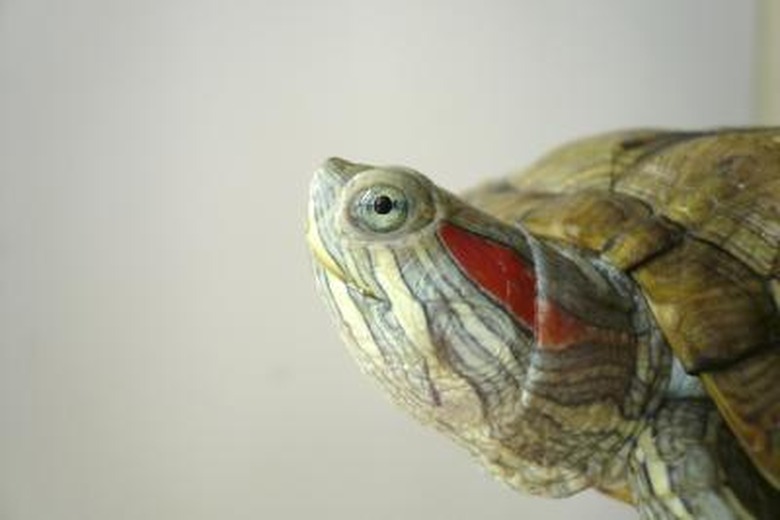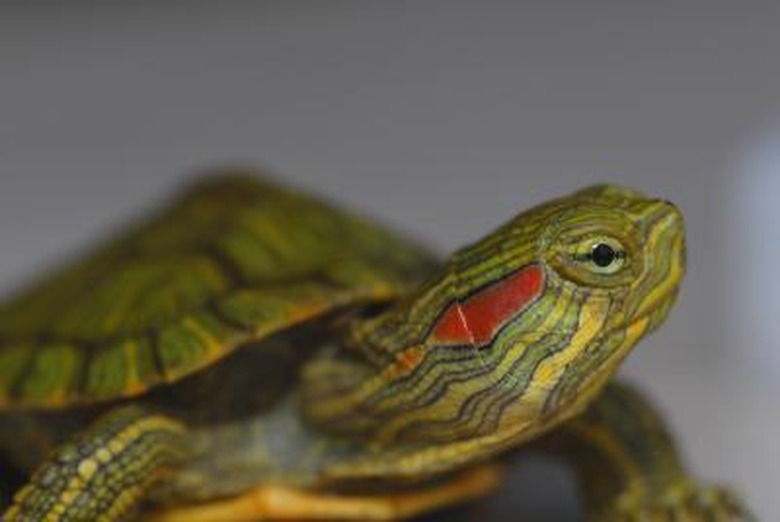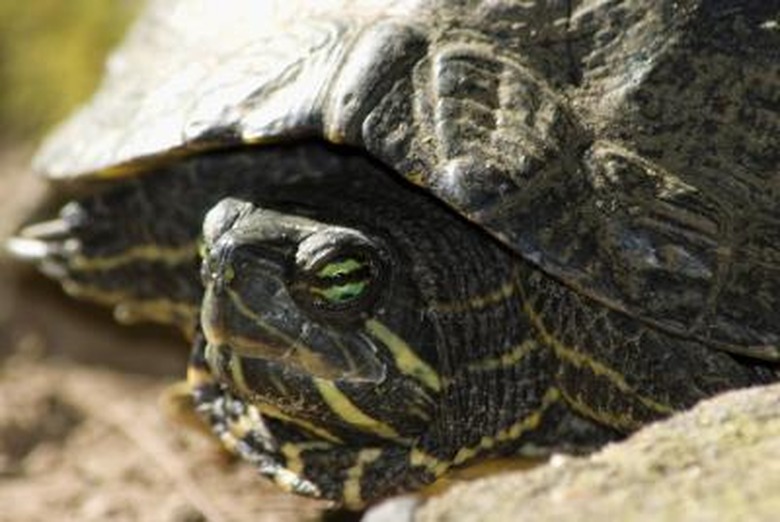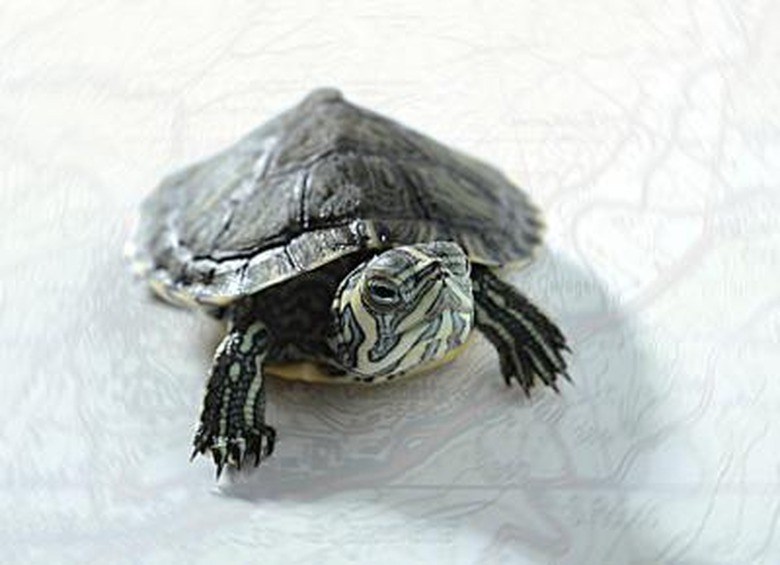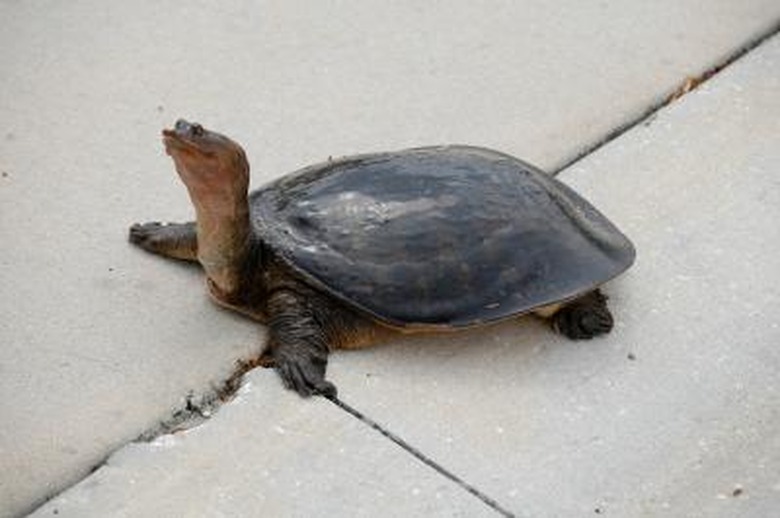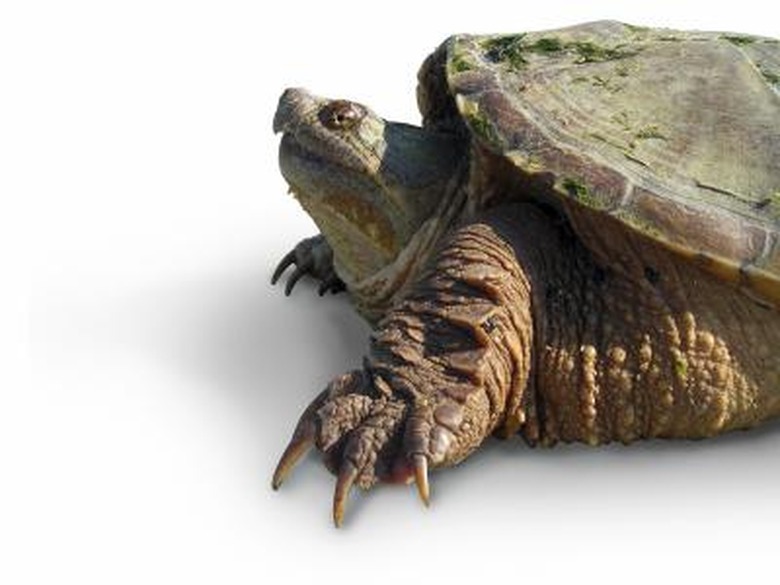Types Of Small Pet Water Turtles
Turtles are quiet and calm pets with generally very hardy personalities. They aren't as temperature sensitive and are easier to handle than other pet reptiles. But, they still require heat lamps. Both terrestrial and aquatic turtles are common in pet stores.
But aquatic turtles, particularly miniature aquatic turtles, have a tendency to be more active, making them more enjoyable to watch and more popular as pets. However, with the exception of red-eared sliders, most water turtles prefer not to be handled frequently. Turtles require specialized care and usually live longer than most pets.
Red-eared sliders - popular turtles
Red-eared sliders – popular turtles
Red-eared sliders are a very popular pet water turtle choice because of their calm nature and hardiness. They are characterized by a distinct red mark near the ear area of the head whereas the rest of the body might vary in color among different hues of green. With proper care, red-eared sliders can be personable reptiles.
This little water turtle is relatively small but can grow up to 8- to 12-inches in length, depending on gender. Like most other species, red-eared sliders are omnivorous and enjoy both plant matter and a range of insects. But red-eared sliders are a commitment; they have lifespans of 20 to 30 years.
Painted turtle - miniature aquatic turtles
Painted turtle – miniature aquatic turtles
Painted turtles are another popular species of little water turtle. These pet turtles are are often seen perched on top of rocks basking under a heat lamp. They are known for their beautiful color patterns on their shells, with various red, green, and yellow colors forming unique designs. While these turtles are small, males can grow up to 6 inches long while females grow up to 12 inches long after several years of a high-quality diet.
Map turtles - a small turtle pet
Map turtles – a small turtle pet
Map turtles are named for the swirls on their shells that resemble a map-like pattern — shells which have evolved for maintaining stability in flowing rivers. In North America, there are 14 different species of map turtles.
These turtles are a little less domesticated than red-eared sliders and painted turtles, so they get very nervous and are easily stressed. They require extremely clean and uncrowded enclosures to minimize any potentially stressful condition. However, if you're looking for a small turtle pet, these miniature aquatic turtles, might be the answer. Map turtles only reach an average length of about 4 1/2 inches long.
Soft-Shell Turtles - more aggressive turtles
Soft-Shell Turtles – more aggressive turtles
Soft-shell turtles are a more sensitive species of pet water turtle with an aggressive nature and require more experienced owners. As their name suggests, these turtles have a characteristic soft shell rather than a hard one. They are larger freshwater turtles growing as long as 10 to 19 inches.
Soft-shell turtles also have unusually long necks that they use to breathe air at the surface of the water without leaving the bottom of a pond. These turtles prefer to feed solely on meat such as fish, crayfish, crickets, worms, or shrimp. Because they naturally hibernate in mud for months, they make challenging pets.
Snapping Turtles - not recommend as pets
Snapping Turtles – not recommend as pets
Potential owners should be wary before purchasing a snapping turtle as a pet. Although they begin tiny and cute — as small as an inch long in length when young — snappers can grow extremely large to almost 2 feet in length and 75 pounds in only a few years. Most owners are not able to care for them at this size.
Despite this fact, they are interesting reptiles thanks to their prehistoric appearance and predatory behavior regarding their food. Snapping turtles are aggressive predators, however, and are best left in the wild or in zoos.
